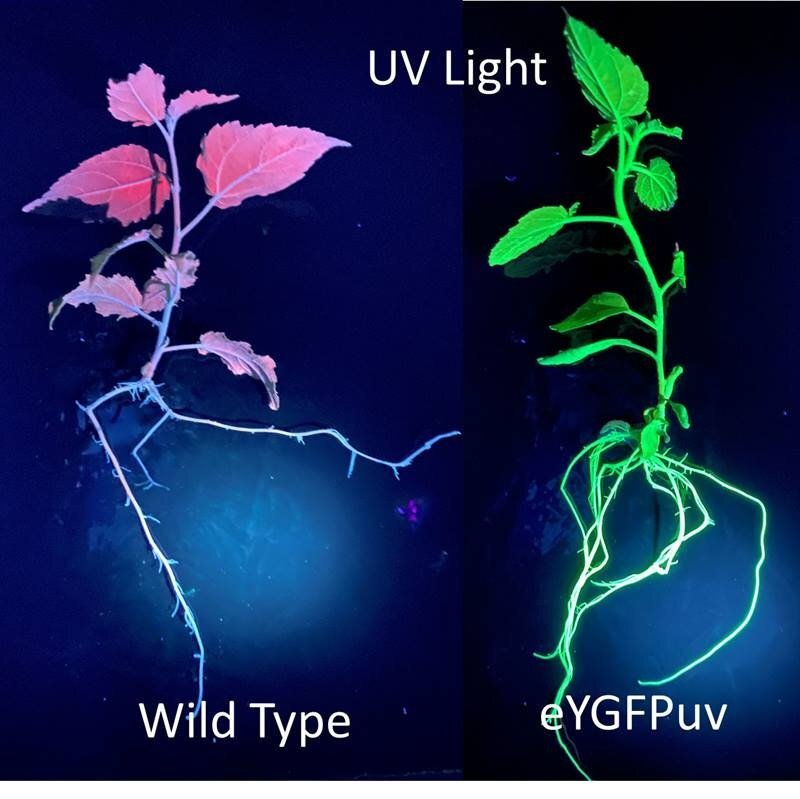Watching plants switch on genes using a fluorescent protein
Date: 10.10.2022
Biologists often use green fluorescent protein (GFP) to see what happens inside cells. GFP, which scientists first isolated in jellyfish, is a protein that changes light from one color into another.
 Attaching it to other proteins allows researchers to find out if cells produce those proteins and where within cells to find them. This in turn shows how cells deliver and use genes. The problem is that this usually requires expensive equipment, such as fluorescence microscopes, and it can be time consuming.
Attaching it to other proteins allows researchers to find out if cells produce those proteins and where within cells to find them. This in turn shows how cells deliver and use genes. The problem is that this usually requires expensive equipment, such as fluorescence microscopes, and it can be time consuming.
In a study published in Horticulture Research, researchers describe how a special type of GFP can be used to "see" protein production with the unaided eye. Modifying the genes of plants allowed the team to see GFP production using a simple black light to provide long-wave ultraviolet (UV) light.
The research demonstrates real-time imaging of cellular and molecular events in a wide range of plants with the unaided eye and a black-light flashlight. This will enable quick and affordable screening for research and development or for real time monitoring of molecular events in mature plants.
After designing and building a GFP UV reporter protein (eYGFPuv) that provides enhanced signals for all tested plant species, the researchers demonstrated that strong fluorescence could be captured using either a fluorescence microscope or UV light. Moreover, this UV?excitable reporter can be observed across a wide range of scales from sub?meter level seedlings to whole plants without need for special emission filters.
Image source: Xiaohan Yang, Oak Ridge National Laboratory.























